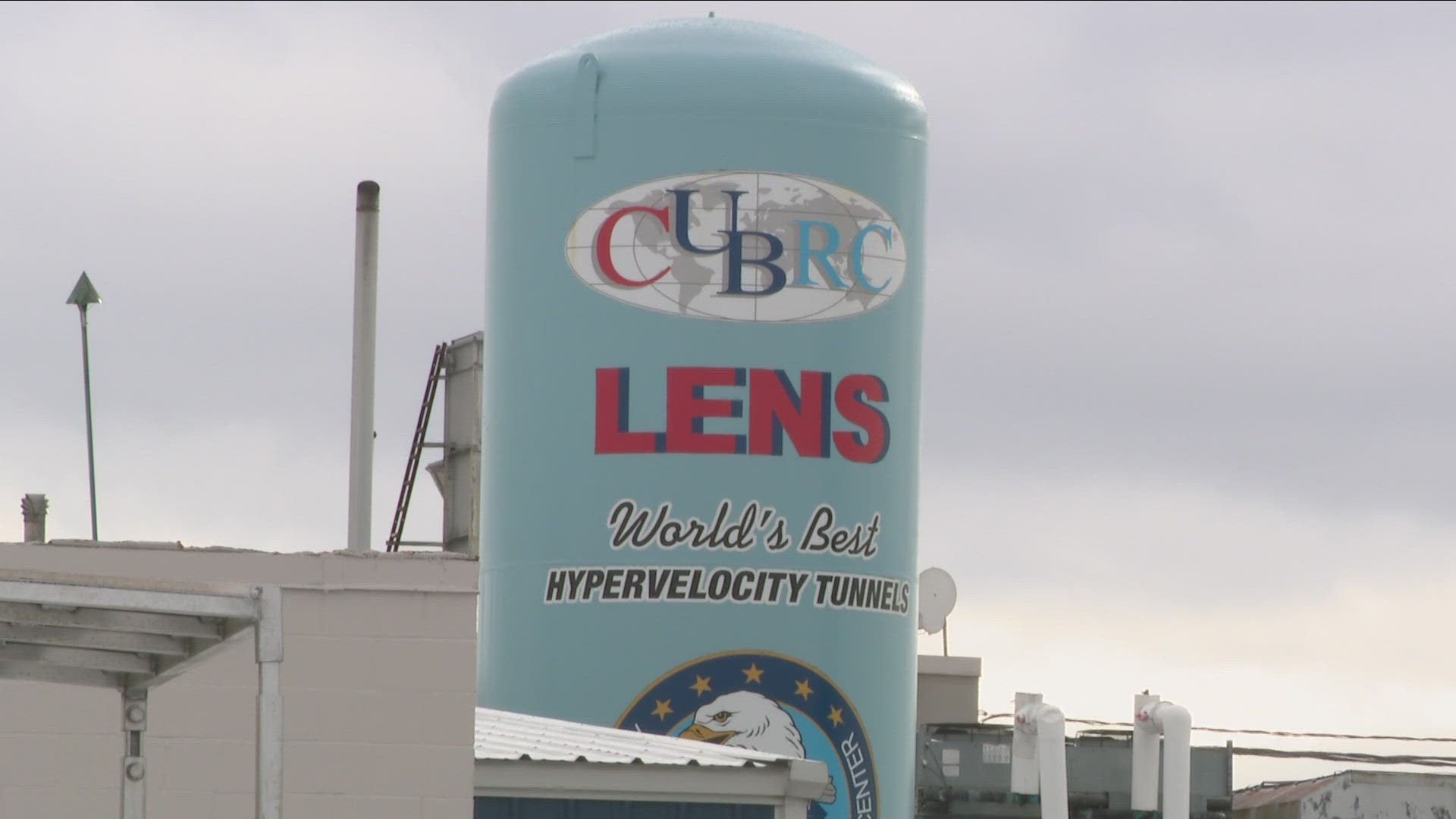CHEEKTOWAGA, N.Y. — Through the years we have shown you glimpses of what happens at the CUBRC facility in Cheektowaga.
2 On Your Side decided to take a closer look at the type of crucial national security work that actually happens there and their need for new staff members as they continue to grow with technology and sophisticated projects.
The projects they handle may help the U.S. military to counter constant threats in new weapons development from Russia and China. Russian President Vladimir Putin has boasted of his country's ability to field these new weapons in the invasion of Ukraine.
Back in 1947, Buffalo brainpower helped fuel the Bell Aircraft X-1 rocket plane built in Western New York for Chuck Yeager to break the sound barrier at a speed of just over Mach 1 or about 762 miles an hour..
Since then we've gone supersonic. But now the push to go ten times beyond the speed of sound - hypersonic - up to seven thousand miles an hour.
And again Western New York knowledge guiding those efforts to push the envelope in those CUBRC shock wind tunnels located on the Genesee Street complex right across from the airport.
Hanging suspended in the hallway of recently renovated office space at CUBRC is in actual replica of the X-51. It is what CUBRC was using in conjunction with the Air Force to research hypersonic vehicles in their wind tunnels here back in 2013. Since then there have been more advancements with specially built models of hypersonic vehicles tested in the tunnels to help design the real hypersonic craft in the earth's atmosphere or beyond.
Tim Wadhams is a senior research scientist and Vice President of Aerosciences at CUBRC. He explains the Defense Department's constant use of CUBRC's specialized LENS or Large Energy National Shock tunnels which can can simulate the effect high speed atmospheric conditions on various vehicles like aircraft and missiles. "You are effectively slamming your way through the atmosphere. That air is getting really hot and hence your vehicle that's traveling at those kinds of speeds is also getting very hot. And so understanding how to protect those vehicles - that they can complete their mission whatever that might be - and be able to handle all that heat, and all that pressure, and all that load that is put on those vehicles is what we do in our wind tunnels."
He adds "Using our wind tunnels, using our ground test facilities we can check out a lot of these things for a fraction of the cost before you go to flight. " That would mean very expensive flight testing by the military or private contractors.
As it turns out, CUBRC has actually gone to flight with the launch of the BOLT II (Boundary Layer Turbulence) hypersonic joint project with the US Air Force
As a Defense Department contractor, some of this work is highly classified as they say. But we know it is an effective counter-balance as the Russians and Chinese are actively pushing hypersonic missile technology to attack US targets in the future.
Wadhams explains "With the military threats that we have it is definitely a team sport. And we need all the good brains and eyes and hands and ears that we can get out hands on from all over the place. And if they come from here in Buffalo and Western New York - all the better."
He notes that eventually we could also have hypersonic civilian aircraft. "Carrying people from here to there whether it's New York to London or to Tokyo you know or whether to carry freight. You know I need a package and I need it in a couple of hours. You know you need to go hypersonic to get there."
CUBRC has expanded dramatically from just three employees in the 1990s to over 200 now with more growth projected including two or three additional wind tunnels.
They have a complete machine shop for metal fabrication to build the specialized models of aircraft or missiles tested in the LENS tunnel. That requires various skilled trade and craft professionals like master welder and technician Dan Sargent who says "This is just a fantastic place to work. Some of the things we do here are just astounding."
CUBRC has also branched out to other futuristic Defense Department work like artificial intelligence for battlefield management . They recently were awarded a $24 Million dollar contract from the Office of Naval Research to provide A-I assistance for U.S. Marines in real time battlefield management.
That program is lead by a CUBRC principal engineer and scientist Hector Ortiz - Pena, who got his PhD from UB and moved to Western New York from his home in Puerto Rico.
He explained how CUBRC is helping to develop mobile smart devices so that ground forces could cut through the proverbial "fog of war." "There's all this information and all this chaos if you will - that they somehow very quickly need to be able to go through and analyze. So basically they can make the right decision."
Ortiz-Pena adds "It's not just the human element but basically systems that are driven by software as well."
Tom McMahon who is Chief Executive Officer and President of CUBRC sums it up their work this way "It's critical for our nation and to do it here in Buffalo with well compensated positions."
CUBRC is of course continuously involved with NASA as well and expects more Defense Department research projects. That means they really cannot talk about some of their work.
There is an active internship program for UB engineering students. The state and SUNY have committed to expand their programs with construction of a brand new school of engineering on the main North Campus in Amherst.
Of course CUBRC stands for Calspan - (that's Cornell Aeronautics Lab) and then "U-B" Research Corporation so that strong link exists.

